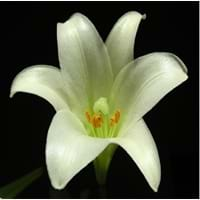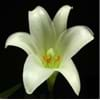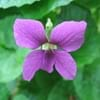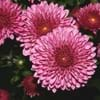Color
Orange, Pink, Red, White, Yellow
Orange, White, Yellow
Color Meaning
Orange - Satisfaction and Passion, Pink - Sensitivity and Love, Red - Courage, Desire and Love, White - Purity and Innocence, Yellow - Happiness and Friendship
Orange - Satisfaction and Passion, White - Purity and Innocence, Yellow - Happiness and Friendship
Fragrance
Aromatic
Aromatic
Line
Not Available
Not Available
Silhouette
Not Available
Not Available
Blossom Texture
Not Available
Not Available
Form
Not Available
Not Available
Sunlight
Full Sun, Part Sun
Full Sun
Watering
Diligently
Enough
Type of Soil
Loamy
Well-drained
Essential Fertilizers
Lime stone
Sulphur
Common Pests and Diseases
List of Pests
Aphids, Mites, Slugs, Snails, Thrips
Aphids, Mites, Nematodes, Spider Mites, Thrips, Whiteflies
List of Diseases
blight, Gray Molds, Nematodes, Root Rot, Rust
Alternia Leaf Spot, Bacterial leaf spot or blast, blight, Crown rot, Downy mildew, Powdery Mildew, Root Rot, Rust, Wilt
Bloom Time
All Summer Season, Fall Season, Spring Season
All Summer Season, Fall Season
Origin
Asia, Europe, North America, Northern Hemisphere
America, Australasia, Central Europe, Northern Europe, Western Europe
Interesting Facts of
- In Chinese culture it signifies being forever in love.
- Pollens of Lily can be poisonous for cats.
- Name "daisy" means "day's eyes" and when given to another person stands for transfer of secret from the giver to the receiver.
- Daisy opens the flower at dawn and closes it at night.
Lifespan
Perennials - a plant that lives for three or more years
Perennials - a plant that lives for three or more years
Flower Meaning
Not Available
Astrological Flower
Not Available
Birth Month Flower
Not Available
Flower Availability
Not Available
Uses
Not Available
Not Available
Health Benefits
Best remedy for Cough & Cold, improves the functioning of the lungs, kidneys, and stomach
Best remedy for Cough & Cold, Cures Constipation, Cures Urinal tract inflammations, Good for liver and gallbladder, Good remedy for Diarrhea, Prevents Cystitis, Regulates the Menstruation cycle
Medicinal Uses
Natural Healer, prevents the formation of scar tissue, treats burns
Acts as a antispasmodic, Acts as an anti-inflammatory, Natural Healer, Treats mouth sores
Culinary Uses
Used in salads, soups and sandwiches
Used in salads, soups and sandwiches
Design Uses
Not Available
Cosmetic Uses
Lightens the skin, Used in Perfumes, Utilized in making essential oils
Lightens the skin, Used as a by- product in fairness creams, Used in Perfumes
Occasional Uses
Anniversary, Friendship Day, Funerals, Sympathy, Wedding
Father's Day, Thanksgiving Day
Allergy
Asthma, Headache, Itchy eyes, Nausea, Runny nose, Sneezing
Asthma, Dark circles under eyes, Hayfever, Headache, Itching, Itchy eyes, Itchy throat, Persistent upward rubbing of nose, Red eyes, Runny nose, Sinus pain, Sneezing
Common Name
Not Available
Scientific Name
Lilium
Bellis perennis
Sub kingdom
Tracheobionta
Tracheobionta
Super Division
Spermatophyta
Spermatophyta
Division
Magnoliophyta
Magnoliophyta
Class
Liliopsida
Magnoliopsida
Family
Liliaceae
Asteraceae
Sub Family
Lilioideae
Asteroideae
Genus
Not Available
Not Available
Number of Species
Not Available
Not Available
More about Lily and Daisy Facts and color
You must be curious to know more about Lily and Daisy facts and color. flowers.comparespecies.com will let you know all the Interesting Facts about Lily and Daisy. Lily comes in Orange, Pink, Red, White, Yellow colors whereas Daisy flowers are with Orange, White, Yellow colors. Other Lily and Daisy facts will definitely amuse you.
Lily and Daisy growing conditions
Absolute growing condition is the only key to keep plants in good health and in good shape. Let’s learn about essential Lily and Daisy growing conditions. Lily requires Full Sun, Part Sun and Diligently watering with 5.50 of Loamy soil. Daisy needs Full Sun and Enough watering with 6.00 of Well-drained soil. Get other Lily and Daisy facts in the sections below.





